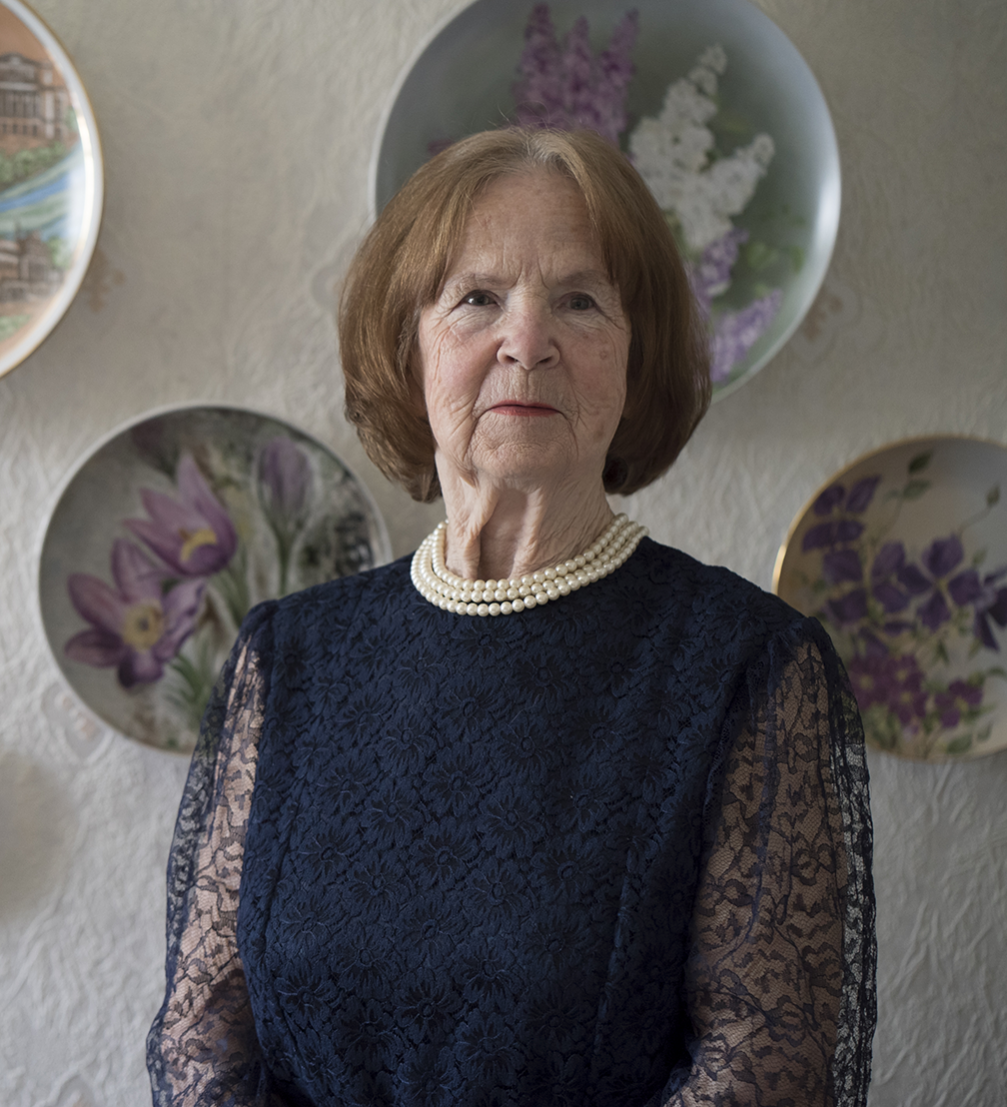
Objects from the Riga Porcelain Factory can be found in almost all Latvian homes, but not many people know that there is a designer behind each piece, someone who not only created the form, but also the ornamentation. Some of the factory’s artists are still alive, and some continue to work. Among them is Beatrise Kārkliņa (b. 1933) who now paints porcelain at home after having worked for many years at the factory.
Beatrise Kārkliņa has devoted her whole life to porcelain. She was an artist at the Riga Porcelain Factory’s (RPF) 2nd production area, and created the design for many sets, figurines, and countless ornamentations in styles varying from Soviet functionalism to painterly realism. Punctuating her speech, her youthful sense of humour has helped Beatrise endure everyday life in a Soviet factory, as well as reach her 85th birthday without dampening the pleasure she takes in either her work or her life. In a conversation over cake and coffee, served on dishes made and designed by the artist herself, we establish who Beatrise Kārkliņa is, and what life as an RPF artist was like. We also find out about the details of various manufacturing techniques, the artist’s thoughts on the design profession, and its purpose during the Soviet era and today.
In your day being a «designer at a factory» wasn’t a proper job for an artist, nothing to be proud of, but rather a way in which to make money that didn’t need to be talked about publically. How do you see things now?
At that time I had never heard of design or knew what it was.
When did you first hear about it? When did you find out you were a designer?
When Podkalne exhibited her diploma work at the Academy it was in the «Young Designers’ Exhibition» [Valda Podkalne is a ceramist who graduated from the Art Academy of Latvia’s Department of Industrial Design in 1979]. We went to the exhibition — design, design, design! At the exhibition Podkalne had made these cylinders, and a flat square plaque. That was what new design was. Of course they were of very poor quality at that time, and we were horrified — if this is new design, how can you even make and exhibit something like that! That was the kind of design that developed at this time, but it wasn’t applied to our factory products. We had to «изготовить новую форму» («make a new form» in Russian), not «создать» («create» in Russian). Everything was in Russian at the time. We didn’t have a plan in Latvian. I was just leafing through the magazine «Māksla» with Poluikēviča’s article. [Taisija Poluikēviča was a ceramist, art historian, was employed in both production areas of the RPF, and was also the founder and director of the RPF museum]. In 1973 she writes that «factory artists have to attempt to create a new style.» Not a new design, but a new style. Our works weren’t talked about as being Ulste’s design, or Kārkliņa’s design.
But how did you feel as artists at the time?
At the time it felt normal. That’s how it was, and you had to accept that. You were content that you could create something new and that you really, sincerely liked doing it. Now I rather think that it was design after all. Each thing had to be created from scratch — conceived of, made, then adapted to factory manufacturing. It was very difficult. You would, for example, be able to produce «Jaunā Rīga» [a coffee set by B. Kārkliņa, 1972] under current conditions, when you don’t have to fulfil a plan, to hurry in order to create more and more, but at that time it couldn’t be produced because you would have had to put each cup on an individual holder to be fired, to file the edges for them to be smooth and shiny, and who would do that?
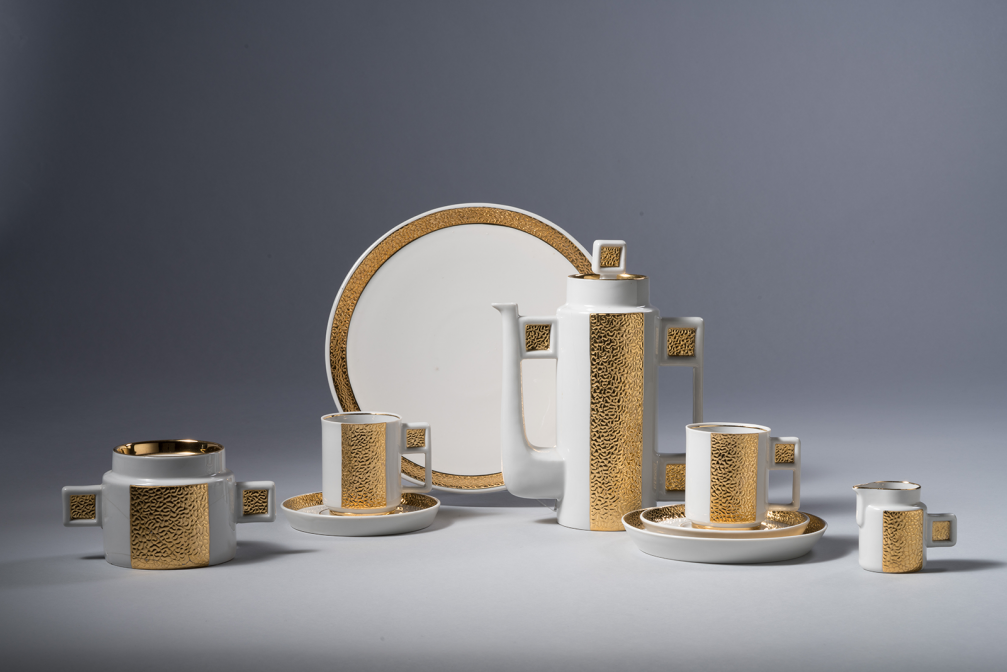
The first years of your life were very colourful — your childhood was during the war, you attended four different primary schools, and you were in the Courland Pocket before you got back to Riga. Tell us about your path to porcelain!
I didn’t really know what I wanted. I knew that I liked porcelain. I attended the Riga College of Applied Arts with my friend Liāna Liepa who later became a ceramist. We had both loved to create things in clay since we were little. I hadn’t even imagined that I’d have to use a wheel, draw, paint. The headmaster, Ērglis, read my biography and said «You, girl, write it again. Don’t mention that you’ve been in the Courland Pocket or I won’t be able to admit you to the school!» That’s how I got into the school where I studied for five years. Now I’ve written my memories of the Courland Pocket.
We only had clay at school, but I was interested in porcelain. In our final year the teacher Rita Einberga came to us, and she got us to paint on porcelain with porcelain paints. I liked it so much that I said: «I don’t want to do my diploma in clay! The clay always becomes delicate, somehow, not like clay.» I was given permission, and they got a china set from RPF called «Rubenss» which needed something added to it. I made a figurine and a lamp base. [Kārkliņa’s figurine «Girl with a Hen» was the first original figurine to be produced at RPF in 1954]. How I painted! Einberga kept promising to take me to the factory to see how they worked. The deadline for the diploma work was approaching and I couldn’t wait. I had to make the figurine, and the form, but we weren’t taught how. So I went to the factory myself. Skurstens was there and he was very open to new people. [Emīls Skurstens, the director of RPF]. Pankoks made the form for the figurine and the lamp base like I wanted them to be, and showed me how to mold. [Miķelis Pankoks, a potter, master craftsman, and designer at the RPF 2nd production area]. I got the highest grade thanks to how well I was received at the factory, and so after graduating I went straight to working there.
At the end of 1953 Ulste came from the Academy to found an artistic laboratory. [Zina Ulste, a ceramist and the head artist of the RPF 2nd production area]. At first I worked in the workshop with hand painting. Fjodorova tested me to see if I could even draw on porcelain. [Porcelain painter, Vera Fjodorova]. She gave me a dish, and it came out too neat. She said: «You won’t make any money with work like this!» It was more important to make things on time, otherwise you wouldn’t get paid.
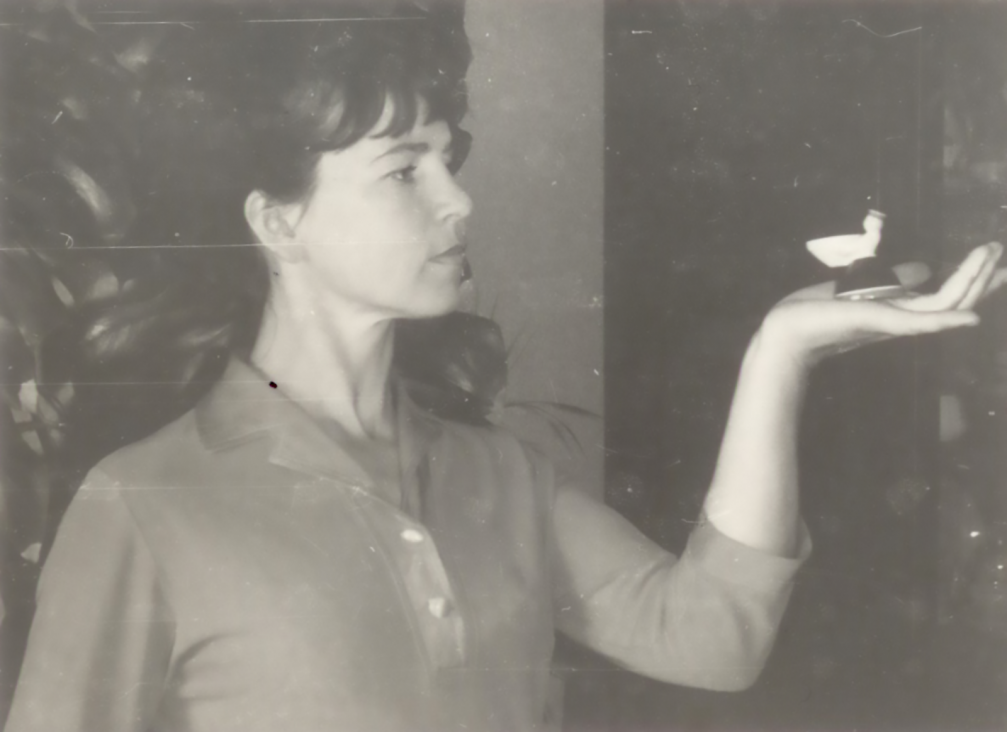
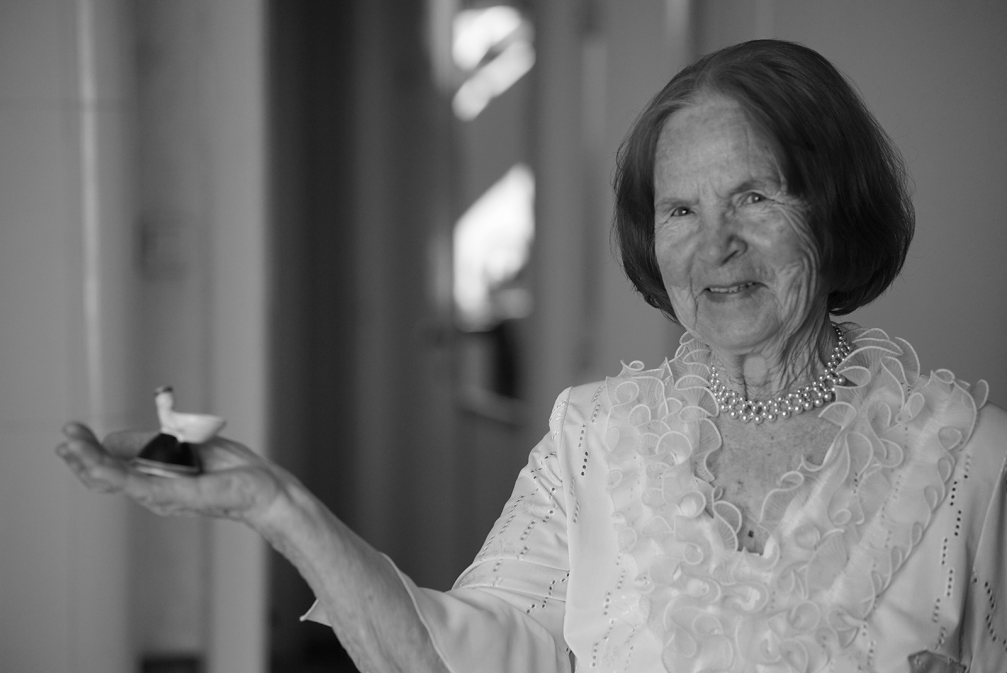
Could you tell us about an artist’s everyday tasks in the factory? What were your main duties?
You had to arrive on time. You weren’t allowed to be late. You had to work eight hours and then go home! (Laughs). At the beginning of the month, you were given a plan which had to be executed point by point. If you had to make a new form for a set then that might be the only task on which you worked all month. But some side tasks always came up anyway. In the beginning, I made sketches which Ulste looked at to decide which to keep working on. Models of the forms were then made, and moulded. Working with the form craftsmen, the forms were then adapted for production. The modelers knew how to make them, for example where to put support so that they wouldn’t become deformed etc. That really alleviated our workload, because we didn’t know as much as they did. The modelers were like second authors of the pieces, and the word «изготовить» («create» in Russian) could be applied to both. One created the idea for the form, and the other physically created it.
Whom did you have to show the final product to?
Everyone came to look when the first forms had been moulded. The main examiners, however, were the head artists and Party representatives who checked to see if something suspicious had been hidden in the ornamentation.
In the factory, you also had to execute special orders for various celebrations, gifts, representative objects, or commemorative objects for anniversaries…
Yes. It was good that those orders existed because they allowed you to be creative. The controls were then especially rigorous, of course, to check if anything treasonous had been hidden in our work. We had to make vases for Lenin’s anniversary. No one could imagine that our freedom monument was hidden in the sickle I’d made! It was the «латышская девушка» («Latvian girl» in Russian). I really liked the symmetrical Latvian ornament, but it was very difficult to line up the colours in the decal. It didn’t pay off for the factory. It was still easy with two colours, but with three, or with something more colourful…
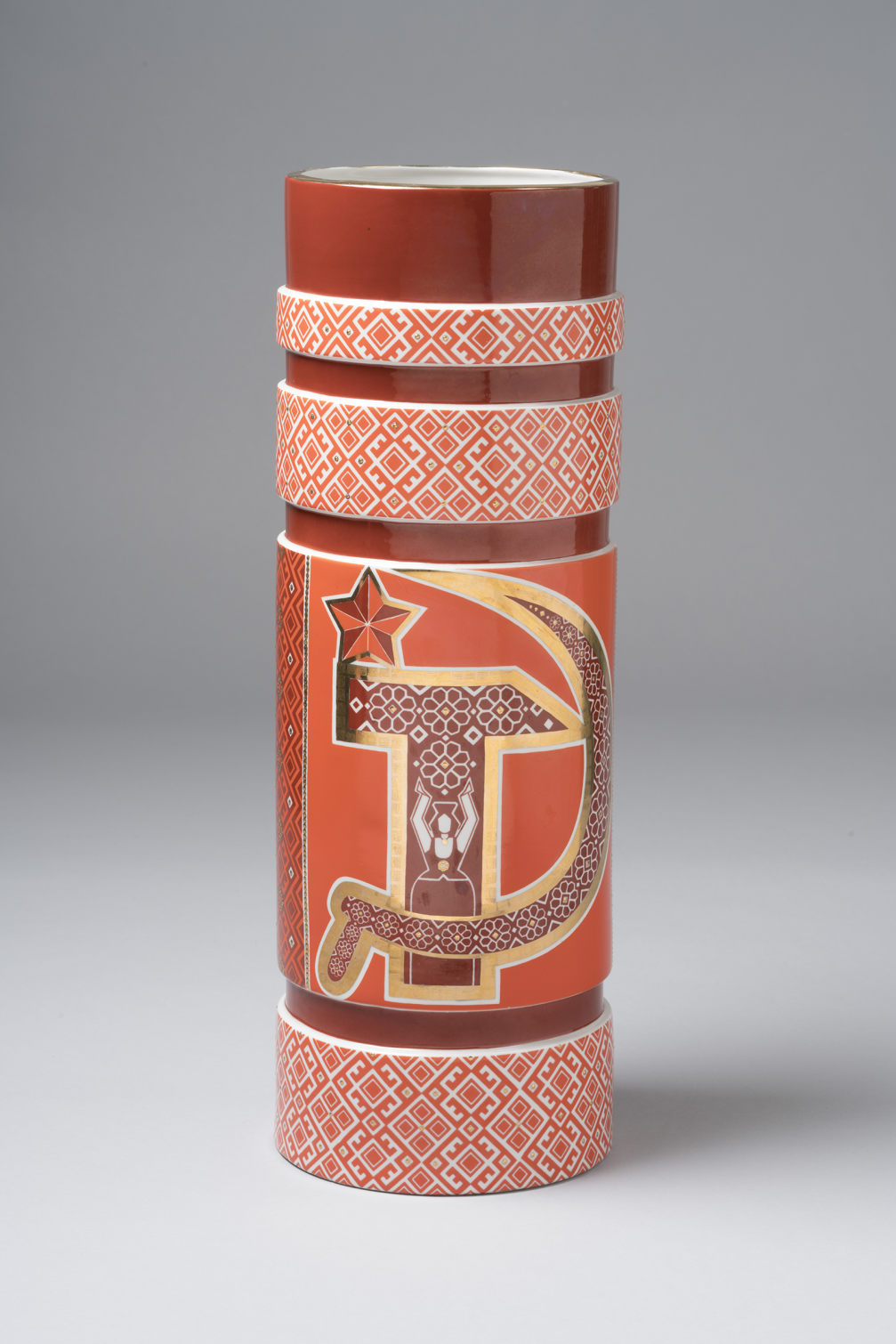
What opportunities did you have to see porcelain or samples produced in other countries?
Absolutely none. We didn’t have magazines, or anything. We were sealed off. We sat in one place for eight hours a day and weren’t even able to go to local exhibitions. No one could understand that it was impossible think of new ideas just sitting at a desk for eight hours. Inspiration has to come from somewhere, after all! After a hard struggle we managed to get one creative day a week where we would be allowed not to be on location, or to work on our own creative projects. The only thing that we had were the USSR Porcelain Factory expositions that artists could go to, but not everyone had the opportunity. We then had to bring everything with us ourselves — we had to prepare and pack all the china, transport it and exhibit it. That’s why Ellers or Agadžanjans often came with us, so that we’d have someone to help us carry everything! [Artists from the RPF 1st production area, Ēriks Ellers and Levons Agadžanjans]. (Laughs). The Lomonosov Factory always had the most beautiful pieces. [The Lomonosov Porcelain Factory, now known as the Imperial Porcelain Factory in St. Petersburg]. They had beautiful drawings, and good artists worked there, but their forms weren’t anything groundbreaking. Porcelain mass was judged too, and Lomonosov, of course, had the whitest. The other factories had very dirty, black and yellow porcelain. We were the second best in the Soviet Union.
How else did Riga porcelain distinguish itself?
With our forms. They were different in our factory. The entire factory was judged as a whole, because we weren’t considered individual artists. We manufactured special objects for the exhibitions to show what the factory could accomplish.
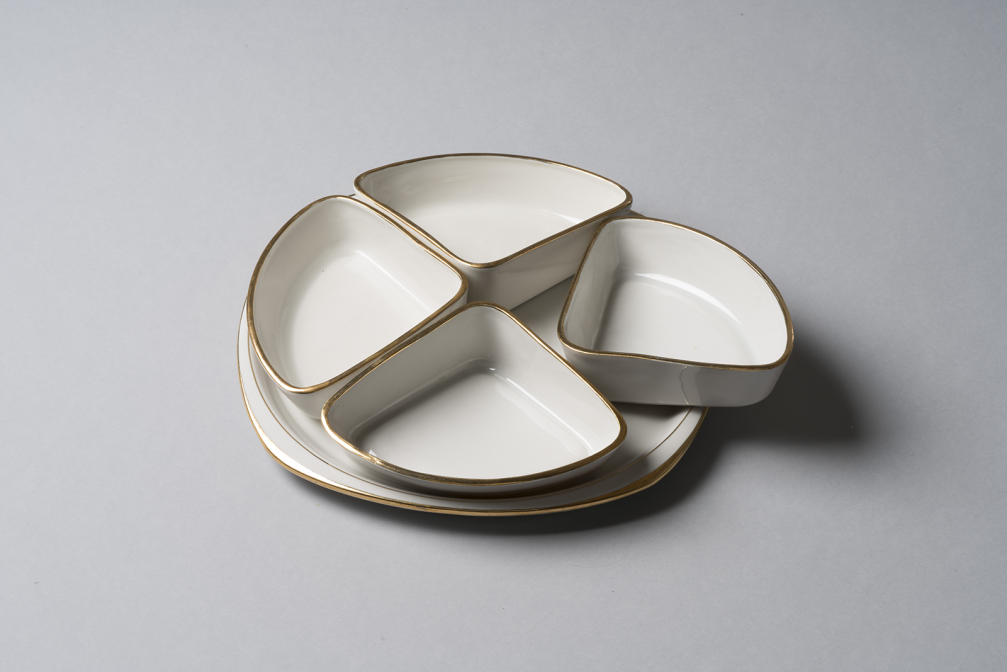
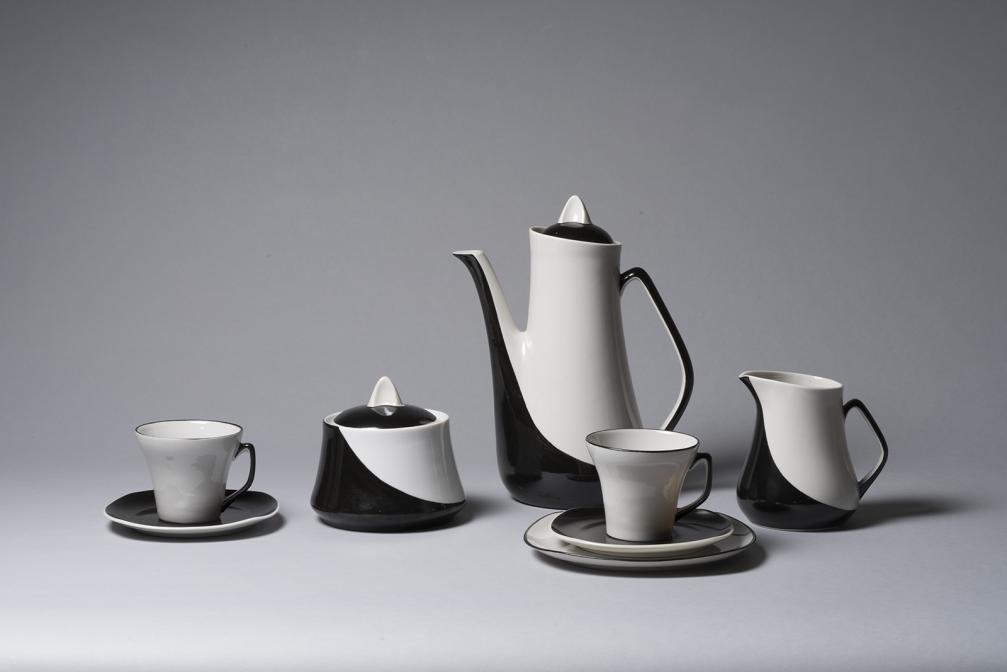
The Soviet designer and creative freedom are seemingly incompatible concepts, but yet, you have many creative pieces that you’ve made yourself. Tell us about the conditions under which they were made, and how you and your colleagues worked as independent artists.
These pieces were most often made under the table! (Laughs). You’d push them aside when someone came in so that they wouldn’t see. When we had to have them fired in the workshop, we got into the habit of putting them in late in the evening when everyone had left, and then running there first thing in the morning to take them out ourselves so that no one would see what we had put in. When Ilga [Dreiblate], [Miķelis] Pankoks and I wanted to put on our first show in 1974, the director said: «I won’t go to prison for you.» He wondered when we’d had time to make those pieces. It caused a fuss!
But yet you had quite a lot of exhibitions together with the colleagues you mentioned.
Yes. After the first ones we weren’t scrutinised so closely. The main thing was to complete the factory work on time. Finally they understood that creative work enhanced the quality of the manufactured work, because we could use a lot of what we learned by being creative in manufacturing — a sketch, or an idea. But it didn’t come about easily.
Once, Ilga and I organized an exhibition in Pushkin, a town by Leningrad, where an international scientific symposium was taking place. There they said: «If you lived anywhere else, you’d be rich. If you create one dinner set, an artist is secure for life.» They were amazed that our salaries were so small considering we were making such good work. We never had any claims to copyright.
Independent artists came to make their work at the factory too.
Yes, many came to us. Mārtiņš Zaurs drew many of his plates, and many came from the Academy. [Mārtiņš Zaurs was a sculptor who worked in interior design, graphic design and porcelain painting]. When the factory was sold our work was suddenly not considered good, and so artists from the Academy were invited to hand in drawings so that they could be manufactured. Everything was nicely drawn on paper, of course. They accepted the drawings, made the decals and then… nothing! A drawing has to be adapted to the form, but our bosses didn’t understand that this drawing wouldn’t fit that form. Then a completely flat plate was brought in from a foreign factory and given to the modeler: «Вот, сделай, вот такие тарелки нам нужны» («Look, make this. We need plates like these!» in Russian). In our temperatures, with our glazing and mass! The modeler worked hard and, of course, after being put into the «gorn» [from the Russian «горн» — a domed kiln for glazing ceramics] they had all stuck to the chamotte base.
Many blame RPF artists that the forms for the china are too classic, fragmented, and that they don’t strive for modern, cylindrical forms, but only few people have knowledge of porcelain manufacturing technologies. To make a straight cylinder you have to put in a lot of work, and the chances of success are small. That’s why forms need inserts and rims, elements which compensate for the deformation of the form during firing.
No one from the outside knew or understood that. They just reproached us: «What do you need all that for? The form has been ruined.» But the rim gives it its substance. «Why can’t you make a cup with a curved rim?» No one understands that in order to fire cups like that, they need to be placed next to one another, and when they’re placed on boards to be taken to be fired, they can knock against one another and then they’re all chipped!
Everyone was delighted when «Sakta» was made, for example, but then it was criticised for having an opening so small that you couldn’t take sugar out. [«Sakta», a tea set created by Zina Ulste, RPF, 1960]. But stylistically it was good. And the handle… you couldn’t remove the lid. It slipped from your hands. So we put ridges into the thingy. You can learn from that kind of criticism. Not everything that is good from a stylistic point of view is good from a practical point of view.
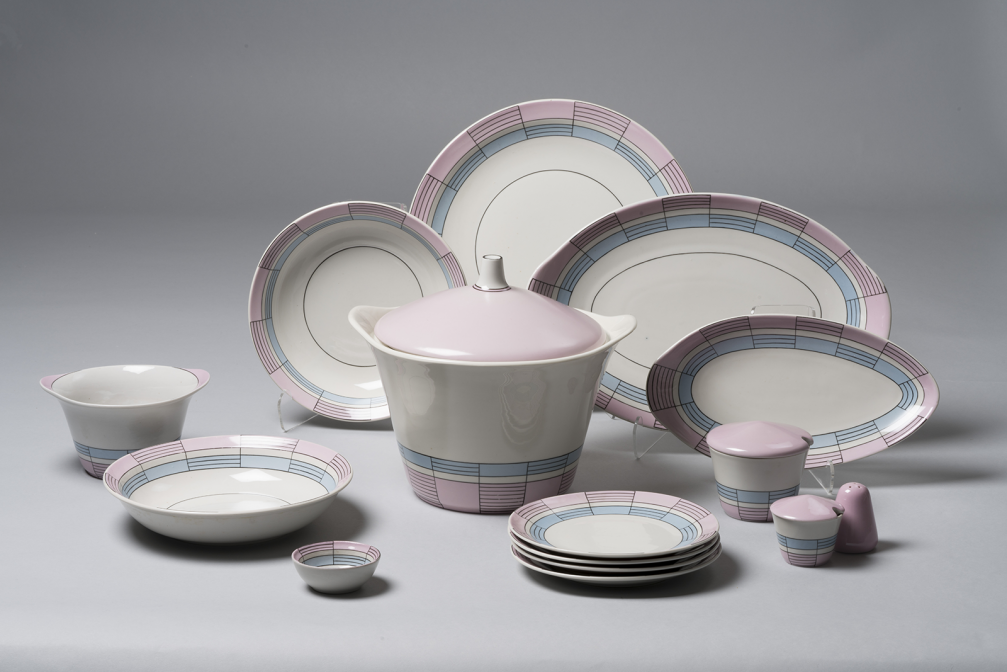
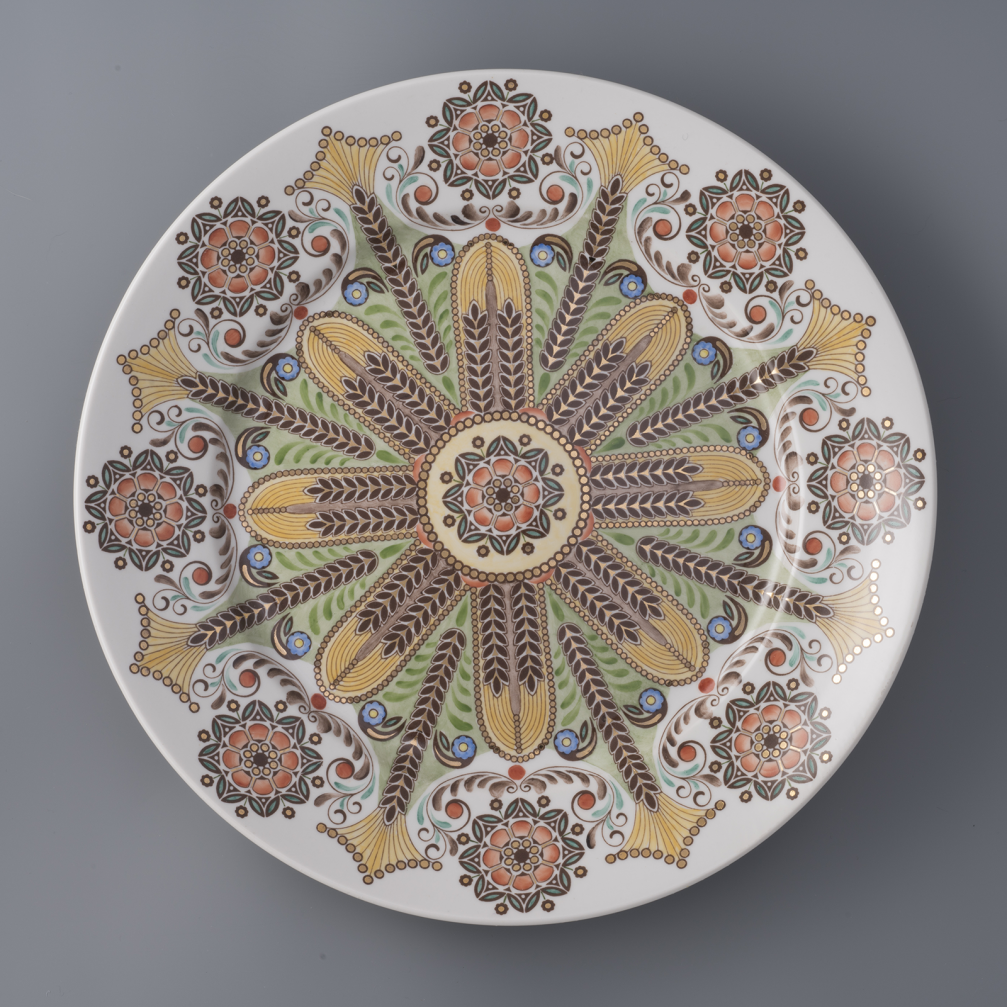
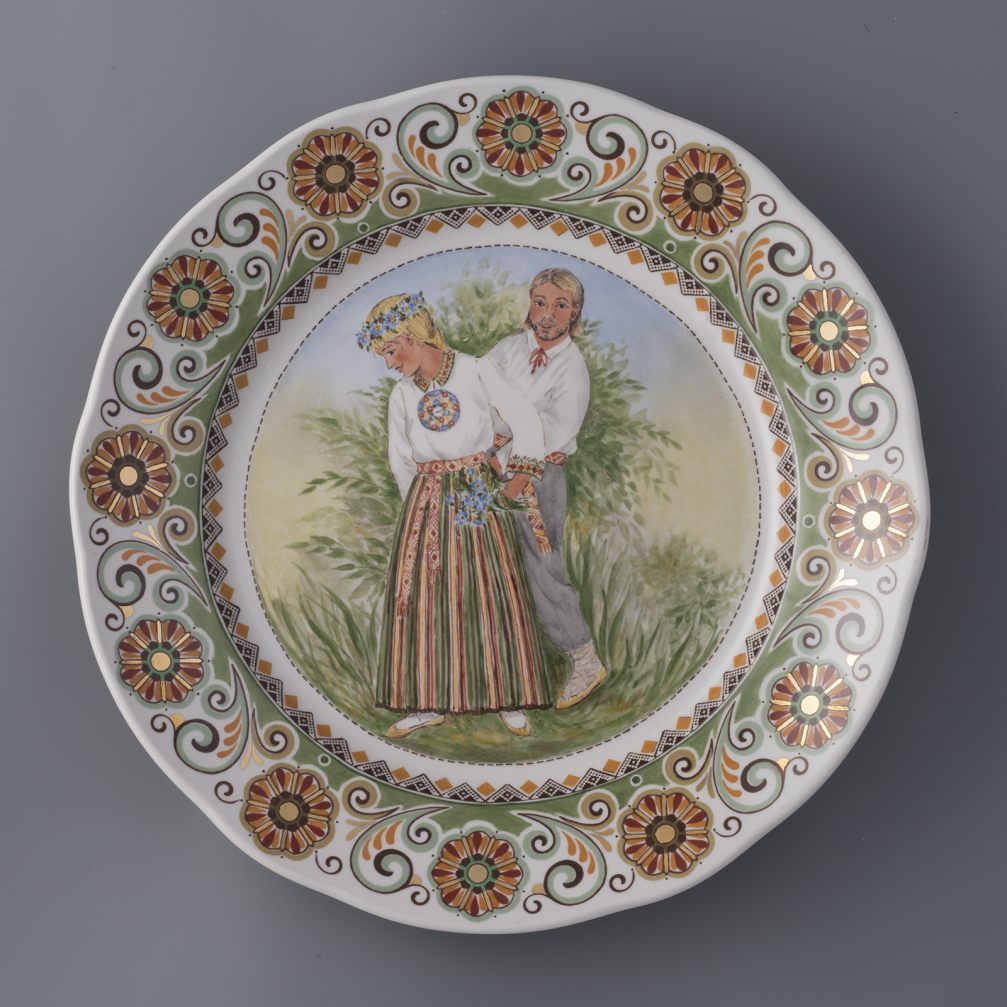
You’ve spent your whole life with porcelain — 44 years in the factory. You stopped working there in the early 2000s, and the factory is now closed. How do you feel now that your active career has ended?
When the factory was bought, I still worked there for two more years, until 1998. Then I simply left. I regret staying and damaging my sight there for those additional years. It was unfruitful work. No new forms were commissioned. Most of the work consisted of creating decals – they needed all kinds of elves and cats etc. You had to make characters like Snow White, for example, or «Ну погоди» («Hey, wait!» in Russian). They said that you shouldn’t over think it and just make them so that children would immediately recognise what it was, because they’d all seen the films and books. That’s why work wasn’t interesting anymore.
What do you think, how would the porcelain factory have developed if it had remained open?
We had a dream that there would only be one gorn left. We wouldn’t even need the expensive gas ovens. Then we would create good, unique pieces until the gorn was full, and when it was opened we’d celebrate. It would have been an immediate payoff. But that dream was extinguished. The first thing that the new owner did was to fire all the masters. He had to destroy the factory, but legally the company had to stay open for two more years.
What does it mean to you that almost every home has something created by you, like a decorated plate or a whole set?
I like it. It’s very satisfying when people buy your work. If your work just sits there, and no one buys it, then you’re no good. But, if it’s sold out, and people ask for more and more, and it can’t be taken out of production because they’re asking for your work specifically, that’s very satisfying.
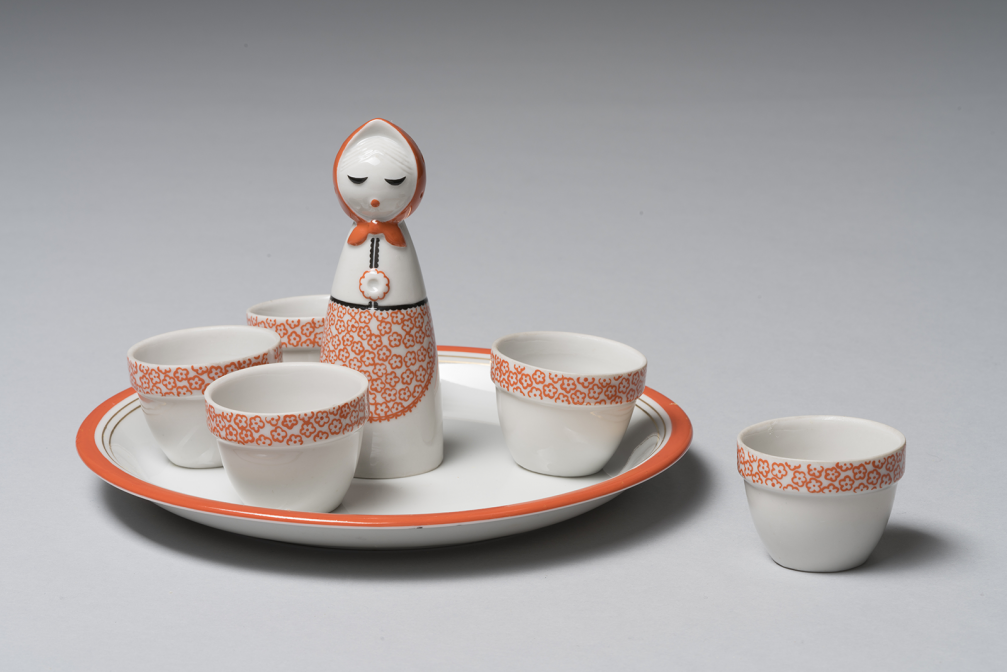
Further information about the themes and information mentioned in the conversation can be found in the monograph/catalogue published last year — «Industriālais romantisms. Beatrises Kārkliņas porcelāns» («Industrial Romanticism. Beatrise Kārkliņa’s Porcelain»), and at the Riga Porcelain Museum.
All photographs — courtesy of Riga Porcelain Museum.
Viedokļi